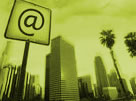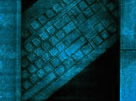



Hey TK,
I'll dig out a few other bit's of DIN Sync equipment and try them. (TR-606, TB-303, MC-202, TR-808)
It's just my TR-707 was out, and I figured that as the TR-707 was made by Roland, it would be indicative of all Roland DIN Sync equipment.. I'll try and find the specs of the TR-707's DIN sync.
A while ago, I did use the J5 gate outs to trigger my LinnDrum. I did this but putting in 16th triggers, And setting them all to roll (I can't remember what setting exactly)
I then played with the clock divider until I got my 48ppq.
This also worked fine for a while, Until I did anything serious on the MB-SEQ such as real time record, erase, randomise, scroll etc.. then it lost a fair bit of Sync.. Almost as if a few clock 'ticks' got forgotten about.. (Pretty much exactly the same issue happening when I use the DIN sync out of my MB-SEQ)
I'll make up a Jack-DIN cable, and test the TR-707 using the J5 Gate outs to verify if a longer pulse length helps with the TR-707.
Another thing I could try is to "record" the DIN Sync out of the MB-SEQ as audio, and then play with the MB-SEQ and see if it was dropping any clock 'ticks' ? (Or look at the signal on a scope, but this way we can exchange the info)
As always, Kind regards
Mike
Hiya TK,
Perhaps I have set it up wrong or it wont work with roland gear? Maybe I have used the wrong pin on the core, or connected the wires wrong on the plug, or maybe not set up the option in the asm file properly. It wouldnt surprise me as the whole procedure seemed a bit confusing to me, only because Im not used to figuring this sort of thing out.
I had eventually hooked it up so that sc on J6 connects to the clock pin on the plug and j6 vs connects to the screen on the plug. I left the asm file as is for this feature. I have not tested it on my TR-909 yet, maybe it will work on it? I only tested it on my TR-606.
Just to help troubleshoot, what should I be measuring to see if the right signal is getting to the jack? Is it something that could be measured on a multimeter or only on an oscilliscope?
Best Regards,
John
hi all,
i have a question, and it should be fairly simple to answer.
here is the plan: i have a beautiful roland tr 606 which has a dync-socket (no midi). i want to sync it to a gameboy advance (no kidding, ever heard of nanoloop?)
now, basically iĂ´ve done this before with a gameboy classic, but the gba expects 3V at the linkport instead of 5v......
so, the only thing i need to know is: how to reduce a voltage of 5v down to 3v?
which parts do i have to use? i dont know so much about voltage regulators, but since most people on this forum are quite tech-savvy i thought iĂ´d just ask....
thank you all, creekree
hi all,
i have a question, and it should be fairly simple to answer.
here is the plan: i have a beautiful roland tr 606 which has a dync-socket (no midi). i want to sync it to a gameboy advance (no kidding, ever heard of nanoloop?)
now, basically iĂ´ve done this before with a gameboy classic, but the gba expects 3V at the linkport instead of 5v......
so, the only thing i need to know is: how to reduce a voltage of 5v down to 3v?
which parts do i have to use? i dont know so much about voltage regulators, but since most people on this forum are quite tech-savvy i thought iĂ´d just ask....
thank you all, creekree
Hi creekree,
The dinsync output of TR606 is about 8V peak to peak, not 5V. To reduce this down the easist way to do it is to use two resistors as a potential divider, the only problem with that is that it has limited drive current, but if thats a problem a single rail op amp (CA3140 or similar) could be used afterwards as a voltage follower. The 606 din sync hasĂÂ fairly hefty buffereing, so I think you'd be fine with just simple 2 resistor potential divider. Try 1k8 and 1k resistors, these will give about 2.8V, or 1k8 and 1K2 will give 3.2 volts. This assumes you have nothing else connected to Dinsync, if you have then you'd need to use much higher values andĂÂ voltage follower opamp.
Allan
[img width=300 height=200]http://www.synthdiy....2001/cmu800.jpg[/img]
The Roland CMU-800R is an analog synthesis add-on system for early 8-bit computers such as the Apple II or Commodore 64. The analog hardware provides four bass/melody voices which are said to be similar to Roland's SH-101 or TB-303 circuits, and a drum set similar to the TR-606, although with very limited/no editability as-is. In addition there are 8 CV/gate outs, a clock in and out (which I assume is 16th note triggered) and four volume faders.
Sequencing and some voice editing is provided by software running on the host computer. A computer-specific add-on card connects to the CMU via a ribbon cable. Neither the card nor the software is available and no-one seems to have them. I've looked ::)
The plan is to bypass the onboard CPU and replace its signals with a MIDIbox Core and custom/adapted firmware, possibly based on the MBCV, SID and/or FM. This seems simpler than trying to reverse engineer the protocols to write to the machine via the ribbon cable, and should allow much more extensive modification into the future using MIOS. For example, MIOS control of mods and bends to allow more tonal variation, LFOs, ADSRs, groovebox SEQ ;D
I've attached the schematic below. When I've fully dismantled the unit, I'll add scans of the two PCBs - a lower PCB hosts the CPU and I/O, and an upper one the analog voices and front panel hardware.
CUrrent set up
modified tr606
tr 727
Yamaha cs2x
Roland M-DC1
Emu E4xt
jsut got in the mail my Analog devices EZkit LITe board.
now to work on the DSP software
Configurable filter/efx/synth anyone? :)
" />
">modern talking i instrumentarium mozna zamknac w 2 okresleniach- w studio 1 instrument czyli komputer, na scenie duzo instrumentow tyle, ze niepodlaczonych do pradu
Oto szczegółowa lista instrumentów wykorzystanych przy nagrywaniu ostatnich trzech albumów MT. Zrezygnowano nawet z gitary zastępując ją "gitarą" z syntezatora.
E-mu SP-12
E-mu Vintage Keys
Korg EX-8000
Korg M1R EX
Korg Mini Pops 3
Kurzweil K2600
Roland CR-8000
Roland D-550
Roland JD-990
Roland MKS-20
Roland MKS-30 + Programmer
Roland MKS-50 +Programmer
Roland MKS-70 +Programmer
Roland P-330
Roland S-750
Roland S-760
Roland SC-155
Roland SVC-350 Vocoder
Roland TR-33
Roland TR-55
Roland TR-77
Roland TR-330
Roland TR-606
Roland TR-707
Roland TR-808
Roland TR-909
Roland U-220
Spectral Audio ProTone
Technics WSA-1
Technics WSA-1R
Waldorf Microwave
Waldorf MicrowaveXT
Vermona ER9
Yamaha CP70B
Yamaha KX5
Yamaha KX88
Yamaha P150
Yamaha RX21L
Yamaha TG500
Yamaha TX816
Bodajże Roland TR-606/626 może służyć jako interfejs do synchronizacji .... ale to zawsze będzie koszt :/
Może sprzedaj yamahe i kup jakiegoś wirtualnego analoga ;)
Ok guys, i'm not sure how many people here have quite the same fixation for analogue boss/roland drum machines that I do, but I thought i'd post this anyway.
I'm working on building up a modular drum unit based on my favourite sounds from all the old TR, DR and CR series. I figured i'll start small with the kick and rimshot from the DR-55 (which I love! first drumbox I ever heard). They're pretty simple little circuits, so they're easy to mod too. The layout below incorporates two seperate (identical) kicks and a single rim shot which can all be individually triggered by a +5v pulse. I think it would be nice to layer two kicks, one very low and long (say 60HZ) and another short & high (150Hz??). Luckily I found a single mod on the net that would do both with one single pot. The same goes with the rim shot which can be pitched up and down using the emitter resistor. It's also possible that i'll put these parameters under CV, using the techniques shown here:http://www.hoohahrecords.com/resfreq/mods/dr110.html
I'm working on cloning the snare and hats from the DR-110 at the minute, but i'm not exactly sure how they work so bear with me (assuming anyone cares!).
If anyone's interested, i'd appreciate any feedback regarding the accuracy of the layout below (i've included the schem for reference. I have both DR's. 808, 606 and 909kick schems if anyone wants them as well as the CR-78 too).
I've tried to keep things as small as possible. Trig1 & Trig2 are the kicks, same with out1&out2. The pad for out2 seems to have gone awol on the layout though ???
I'd appreciate it if anyone can shed any light on how the schmitt trigger gates the noise signal for the snare and hats, as i'm stumped by that at the minute.
http://tk.files.storage.msn.com/x1p3q6ujd6xcOpOfW-G0f53Of6axOUXKnK79AStM-yR3ZU_UNIjdziLrcELq-w0054FlCqVkyCbnmjpem923WGZCQnyN2dWNSw322t1RyHeBBFFu_UNjiJg3t45qIQKWf4AdCEnWlO_KB8nQJFI_OvKAg
http://tk.files.storage.msn.com/x1p3q6ujd6xcOpOfW-G0f53Of6axOUXKnK79AStM-yR3ZUYGpWfKYz6sEUtJAqKJLz5m8KZWdUy-2ctteJkFiQRjVD95-du9pt6LRk71QblZ3nX4BVumyp6braG3GLhkIKrhgys1ZP6OtD4THw91PofAg
http://tk.files.storage.msn.com/x1p3q6ujd6xcOpOfW-G0f53Of6axOUXKnK79AStM-yR3ZWh0W5x1jTGXHP3JpGd4YMNXVq3TaAK60tTzAoMLB0VsgW423UavCdfrnq1gmeADihe9qYoYmnVbdJ2mGWEaZ3UIh5F_Ib9AO-mT_o73BNGzQ
Dr. Octagon - The Return Of Dr. Octagon [2006]
tego dyskografi tego pana to lekcje odrobiłem...
cos dla nienormalnych: Autechre - "LP5" jaram sie...
opis artysty według lastfm.pl :
Autechre - brytyjski duet w składzie Rob Brown (ur. 1971) oraz Sean Booth (ur. 1973).
Zespół ten tworzy muzykę elektroniczną, w szczególności ambient i IDM (starsze albumy) oraz muzykę eksperymentalną i abstrakcyjną (nowsze dokonania), czy wręcz non-music. Brzmienie Autechre, choć podlega ciągłej ewolucji, jest specyficzne i łatwo rozpoznawalne. Większość ich płyt została wydana w londyńskiej wytwórni Warp Records. Brown i Booth zaangażowali się także w projekt pod nazwą Gescom, będący stowarzyszeniem muzyków elektronicznych, którzy nie ujawniają swoich personaliów (choć częściowo są one znane).
Historia i nazwa zespołu
Booth i Brown założyli Autechre w 1987 roku w Rochdale, będącym jedną z dzielnic brytyjskiego miasta Manchester. Działalność muzyczną rozpoczynali od miksowania materiału muzycznego na kasetach magnetofonowych, lecz szybko zaczęli tworzyć własne kompozycje. Na początku wykorzystywali tanie instrumenty elektroniczne, takie jak Casio SK-1 (sampler) czy komputer perkusyjny Roland TR-606. Niedługo potem dysponowali już pokaźnym zapleczem instrumentów.
Booth i Brown nazwę swojego zespołu wymawiają jako „ou-te-ker” (IPA [ɔˈtɛk.ə]), choć sami uważają, iż nazwa ta może być wypowiadana w każdy inny sposób. Powstała ona przypadkowo, choć dwie pierwsze litery „Au” stanowiły zapis fonetyczny próbki dźwiękowej zawartej w utworze, a pozostała część nazwy „techre” była wynikiem przypadkowych uderzeń w klawiaturę komputera. Jak sami mówią: „ Nagraliśmy ten stary utwór na kasetę i wykonaliśmy kolorową okładkę. Spodobało nam się to bardzo i od tego czasu zaczęliśmy używać AUTECHRE jako naszej nazwy”.
Autechre nagrywali także pod różnymi pseudonimami, prawdopodobnie po to, aby unikać zainteresowania mediów i fanów. Jednym z pierwszych dokonań duetu była 12’’ epka, nagrana pod pseudonimem Lego Feet w 1991 roku, a wydana przez Skam Records. Inne utwory nagrywali pod pseudonimem „Ae”. Muzycy występowali też gościnnie ze stowarzyszeniem muzyków elektronicznych Gescom.
Muzyka
Część słuchaczy określa muzykę Autechre jako zimną i mroczną, choć inni jej miłośnicy uznają ją za przyjazną i sentymentalną. Większość utworów została skomponowana z naciskiem na skomplikowany rytm, który niejako jest motywem przewodnim dla towarzyszących mu zawiłych i obfitujących w eksperymentalne elektroniczne brzmienia sekwencji. Wcześniejsze prace (płyta Incunabula czy Amber) brzmią znacznie mniej skomplikowanie i są łatwiejsze w odbiorze. Mniejszy nacisk położono na rytm utworów, choć i tak jest on obecny, a większy na melodyjność i harmonijność konstrukcji muzycznych. W późniejszych okresach członkowie grupy postanowili mocniej eksperymentować z brzmieniami, co zaowocowało powstaniem utworów chaotycznych a nawet abstrakcyjnych (singiel Gantz Graf, albumy Draft 7.30 i Untilted).


Trzeba żyć, a nie tylko istnieć.